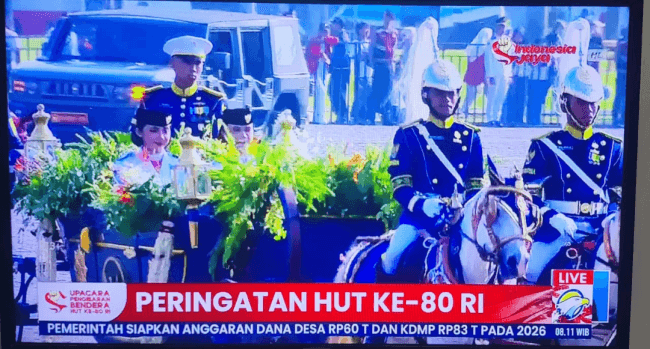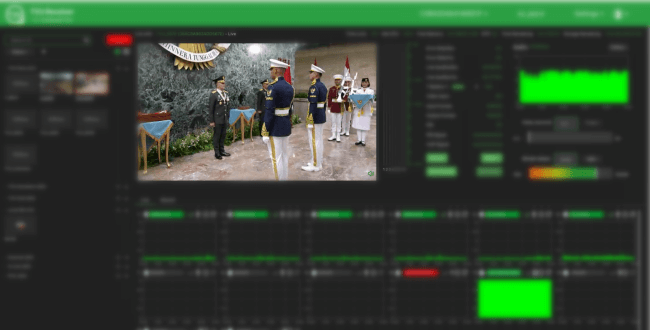From smartphones to backpack transmitters, a TV Record affiliate in Brazil showcased the versatility of TVU Networks’ cloud production during the live coverage of Semana Farroupilha, a major cultural festival in Southern Brazil....

TVU One Powers Successful Live Broadcast of Indonesia’s 80th Independence Day Celebration
TVU One Delivers Stable, Low-Latency Broadcast for Indonesia’s 80th Independence Day
View Related Products
On August 17, Indonesia celebrated the 80th anniversary of its independence with a grand national ceremony. At the State Palace in Jakarta, President Prabowo Subianto led the commemoration with a flag-raising ceremony and an official address, delivering a powerful message of independence and unity to the nation. To ensure this historic moment reached audiences across Indonesia and around the world, the Presidential Palace adopted TVU Networks’ TVU One backpack as the core broadcast solution, enabling reliable, high-quality live coverage of the celebration.
As a state-level event of such magnitude, the celebration was not only a unifying moment for the people of Indonesia but also a showcase of the nation’s achievements and cultural heritage to a global audience through television and online platforms.
The State Palace faced major technical challenges in preparing for the live broadcast. With multiple venues involved, ensuring stable signal transmission was a key concern. The presence of large crowds created a highly congested and unpredictable network environment, placing heavy demands on broadcast reliability. Moreover, for international distribution, the live feed needed to maintain high quality and low latency.
To overcome these challenges, the State Palace selected the TVU One as the core broadcast solution. With its portability, efficiency, and proven reliability, TVU One delivered exceptional performance. Leveraging multi-network aggregation and intelligent encoding, it ensured stable, high-quality live video transmission even under the most demanding network conditions.
How TVU One Enabled Seamless Live Broadcast
- Rapid On-Site Deployment: At the Presidential Palace, the production team quickly deployed TVU One, connecting it to multiple cameras to ensure comprehensive coverage of key ceremony moments.
- Multi-Network Aggregation & Intelligent Encoding: Powered by TVU’s patented IS+ transmission protocol, TVU One intelligently aggregated multiple network paths. Even in areas with dense crowds and heavy congestion, it maintained low latency and HD quality.
- High-Quality Decoding: Signals were transmitted to the TVU server for decoding, providing the production team with stable and crystal-clear video feeds.
- National & Global Distribution: The final broadcast was distributed across major Indonesian TV networks and the Presidential Palace’s official YouTube channel, allowing both local citizens and international audiences to witness the historic moment.
TVU One’s unique multi-network aggregation technology proved especially effective in overcoming signal instability caused by crowd density. By intelligently combining 4G/5G cellular, Wi-Fi, and other available connections, the system split video data into multiple packets and transmitted them simultaneously across diverse paths. Real-time traffic balancing, error correction, HEVC high-efficiency encoding, and adaptive bitrate ensured smooth, uninterrupted transmission — even during peak network usage.